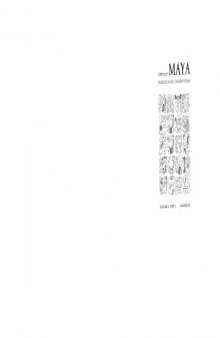دانلود کتاب Corpus of Maya Hieroglyphic Inscriptions 3.1 (Yaxchilan)
by Ian Graham, Eric von Euw|
|
عنوان فارسی: قسمت جلوی هیرنگلیفیکای مایا 3.1 (Yaxchilan) |
 دانلود کتاب
دانلود کتاب
 جزییات کتاب
جزییات کتاب
In this region the river flows, for the most part, between sandy terraces of varying width, but on the order of 100 m wide, at the back of which rise up escarpments or irregular masses of karst- formation hills. It is along a stretch of such a terrace, about 1 km in length, and on the ledges and prominences overlooking it, that Yaxchilan was built.
Until recently, access to Yaxchilan had not been easy. The river, it is true, does provide a year- round means of communication, but only in the upstream direction. Passage in a dugout canoe through the rapids of Anaite, about 20 km downstream, and through other rapids at about the same distance farther on, between El Cayo and Piedras Negras, is at best unnerving; at other times, when the level of the river is not propitious, the journey cannot be recommended at all. Rapids below the Piedras Negras make the journey onward to Tenosique impossible at all times.
Upstream, it is a two- day journey (except by speedboat) to Sayaxche, and an expert boatman who knows all the shadows and rocky snags must be employed.
Until recently the only overland route in regular use, since mahogany- cutting along the river began more than a century ago, had been through Guatemalan territory on the other side of the river, passing through Macabilero, Piedras Negras, and Tres Champas, crossing the border there and proceeding to Tenosique. It is a four- day walk.
Since 1974, however, motor vehicles have been reaching the riverbank opposite Yaxchilan over a track that starts at Paso Subin, a settlement on the road between Flores and Sayaxche. The track was seldom passable, but now, at the time of writing, it is being improved.









 این کتاب رو مطالعه کردید؟ نظر شما چیست؟
این کتاب رو مطالعه کردید؟ نظر شما چیست؟
